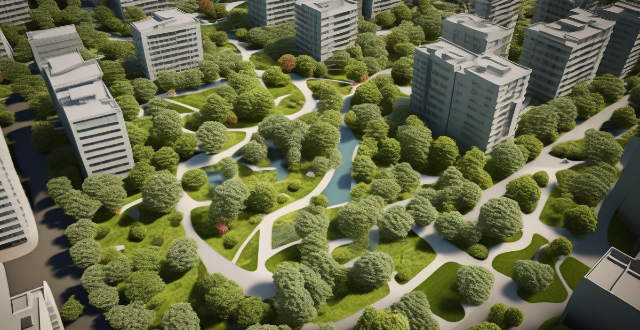Urban green spaces, including parks and community gardens, play a key role in enhancing the quality of life for city residents by providing physical, mental, social, and environmental benefits. Physical health is improved through increased physical activity, better air quality, and mitigation of the heat island effect. Mental health benefits include stress reduction, enhanced mood, and improved cognitive function. Social well-being is boosted through community building, recreational opportunities, and educational value. Environmentally, urban green spaces contribute to biodiversity conservation, water management, and carbon sequestration. These areas are essential for comprehensive wellness in urban environments and should be a focus in future city planning.

Enhancing Quality of Life through Urban Green Spaces
Urban green spaces play a pivotal role in improving the quality of life for city residents. These areas, often referred to as urban parks or community gardens, provide a range of benefits that contribute to physical, mental, and social well-being. Let's delve into the specific ways in which urban green spaces can enhance residents' quality of life:
Physical Health Benefits
- Increased Physical Activity: Green spaces encourage outdoor activities such as walking, jogging, and cycling, leading to improved cardiovascular health and reduced risk of obesity.
- Improved Air Quality: Trees and plants absorb pollutants and release oxygen, purifying the air and reducing respiratory issues.
- Heat Island Effect Mitigation: Urban greenery helps regulate city temperatures, making outdoor environments more comfortable and reducing energy consumption for cooling.
Mental Health Benefits
- Stress Reduction: Spending time in nature has been shown to lower stress levels and reduce symptoms of anxiety and depression.
- Enhanced Mood: The presence of green spaces can uplift spirits and promote a sense of tranquility among residents.
- Cognitive Function: Interaction with natural environments can improve focus and cognitive performance, especially in children.
Social Well-being Benefits
- Community Building: Public parks serve as hubs for community events and foster a sense of belonging among diverse populations.
- Recreational Opportunities: Green spaces offer venues for leisure activities, promoting relaxation and enjoyment.
- Educational Value: Urban green spaces provide opportunities for environmental education, particularly for children who may not have access to rural areas.
Environmental Benefits
- Biodiversity Conservation: Urban parks protect local flora and fauna, supporting ecosystem services like pollination and seed dispersal.
- Water Management: Vegetation helps manage stormwater runoff, reducing flooding risks and filtering pollutants before water enters urban systems.
- Carbon Sequestration: Trees absorb carbon dioxide from the atmosphere, aiding in the fight against climate change.
In conclusion, urban green spaces are vital components of city design that significantly impact the overall quality of life for residents. They offer a multifaceted approach to wellness, encompassing physical, mental, social, and environmental dimensions. As cities continue to grow, prioritizing and preserving these green oases should be an integral part of urban planning strategies.